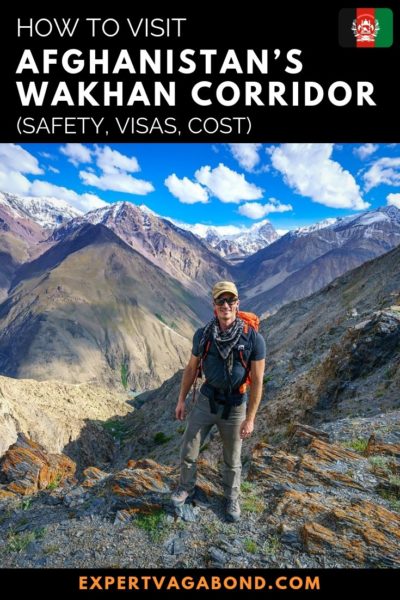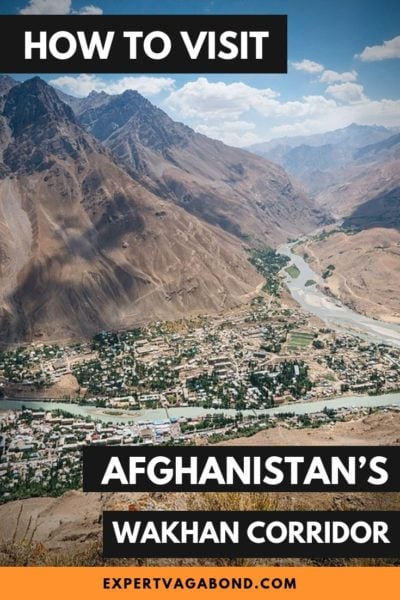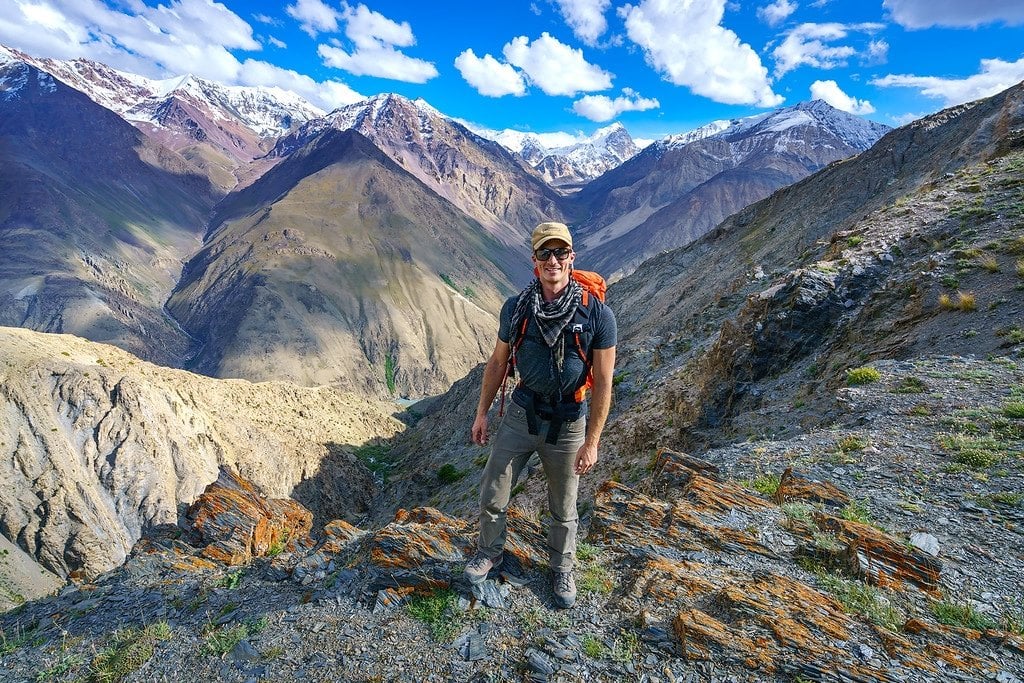
Afghanistan
In August 2016 I traveled through Afghanistan as an American for two weeks, backpacking across the beautiful Pamir mountains in the Wakhan Corridor. This is how I did it.
[su_note note_color="#F5DCDC" text_color="#333333" radius="3" class=""]
DISCLAIMER: The US government warns against travel to Afghanistan. Just because I went, does not mean I think everyone should go. The safety situation changes on a weekly basis, and requires a good deal of research/planning.
[/su_note]
When I told family & friends I was planning a trip to Afghanistan, they thought I'd lost my mind.
Afghanistan, the war-torn Centra Asian (or Middle Eastern, depending on who you ask) country full of terrorists, soldiers, car bombs, predator drones, and IEDs.
Why the hell would I want to go there?
Afghanistan has been on my bucket list for a few years after I met a fellow traveler and public speaker Shane Dallas who happened to share his experience with me at a travel industry conference.
I learned that the version of the country most of us see each night on the evening news is simply not the full story...
Parts of Afghanistan can be dangerous, sure, but it's also full of beauty, hospitality, and history too.
This is the Afghanistan I was on a mission to seek out and share.
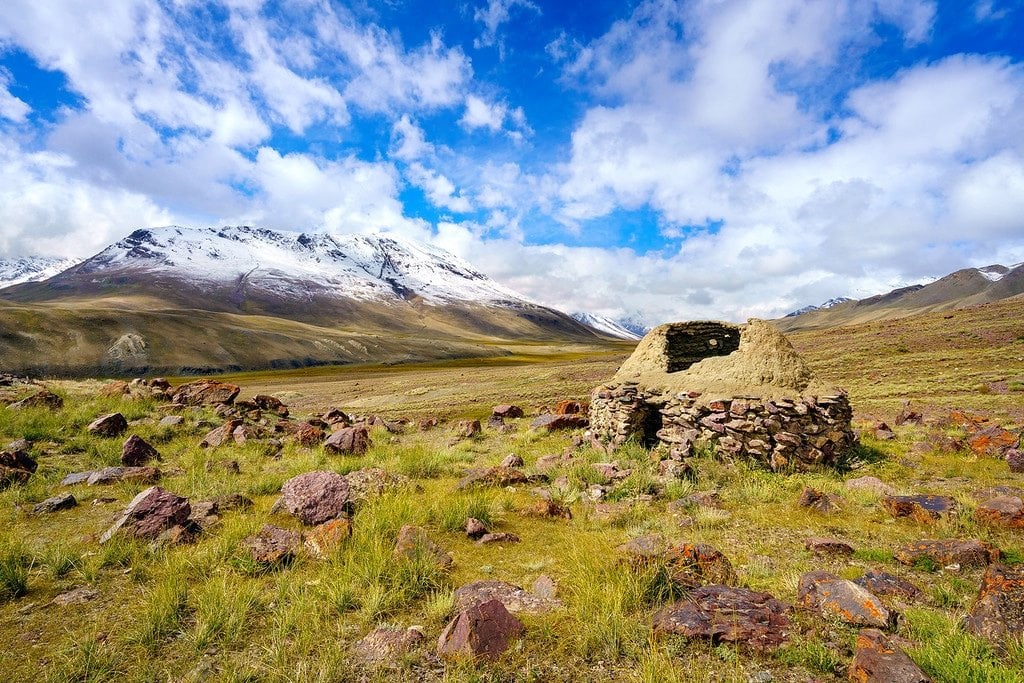
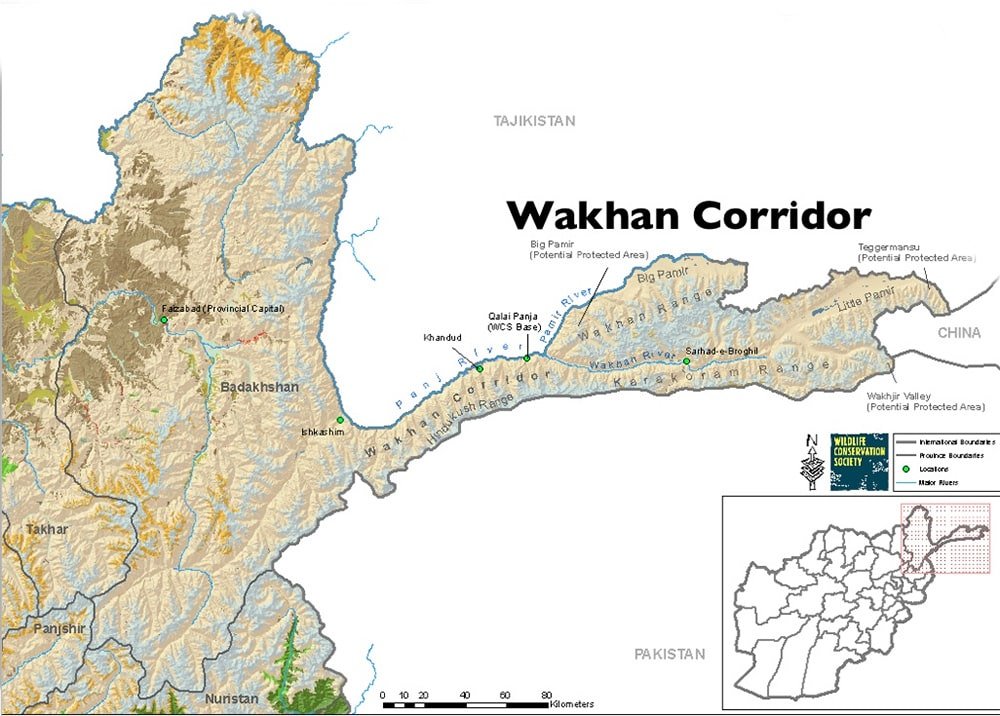
The Wakhan Corridor
Afghanistan's remote and desolate Wakhan Corridor is called the "roof of the world" by the local people who live there.
It's located in the far North-East corner of the country, surrounded on three sides by Tajikistan, Pakistan and China.
The Wakhan is incredibly cut-off from the rest of Afghanistan.
There are no government services, large parts of the region have no roads, and people are basically living on their own in the mountains.
The area is inhabited by two main ethnic groups, the Wakhi and the Kyrgyz. The Wakhi often have two homes, one for winter and one for summer months, made of stone.
The Kyrgyz are more nomadic, living in semi-portable yurt tents made of felt. They move their homes and animals to different valleys depending on the season.
A majority of the population raises livestock for a living. They trade sheep, goats and yaks to merchants from Pakistan or other parts of Afghanistan for clothing, food, and necessities they can't produce themselves at these remote high-altitude locations they call home.
The Wakhan used to be part of the ancient Silk Road, and explorers Marco Polo and Alexander the Great both passed through this part of Afghanistan on their travels around the world.
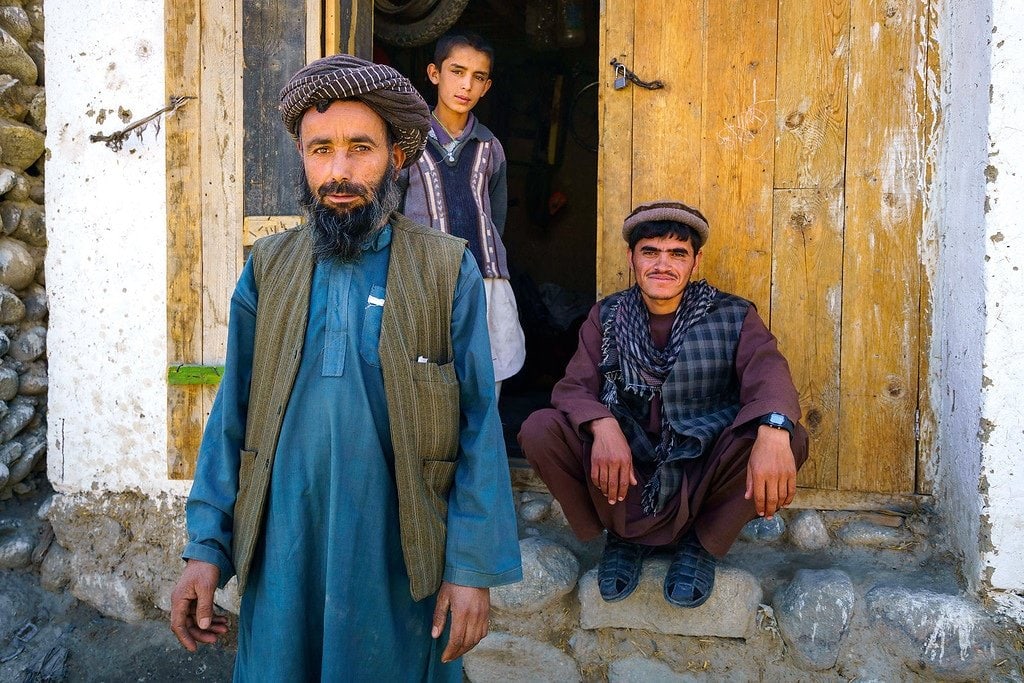
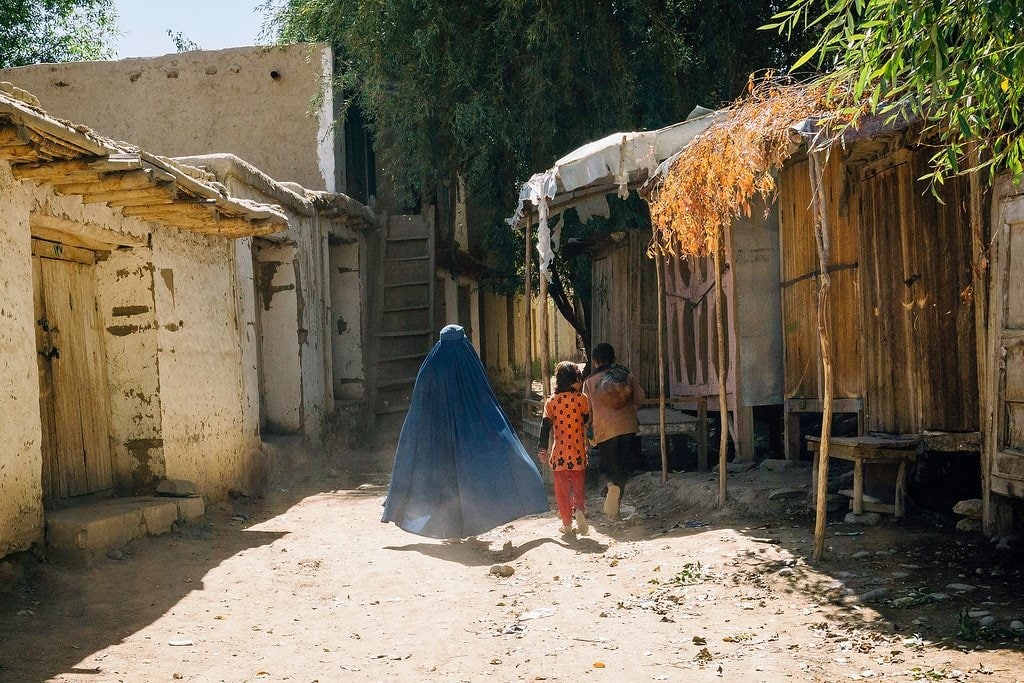
Safety In Afghanistan
Travelers don't have to worry about the Taliban or Al-Qaeda in the Wakhan. It's one of the few places in Afghanistan that has remained relatively conflict-free over the years.
The Wakhan is part of Afghanistan's Badakhshan Province. While the Taliban does have a presence in parts of Badakhshan, the Wakhan region itself is terrorist-free (for now). The main road leading in is currently controlled by the Afghan Military, who keeps the Taliban out.
Most locals living in Afghanistan's Wakhan Corridor are Ismaili Muslims, who practice a moderate form of Islam. They despise the Taliban, and generally welcome foreign travelers. It's become an important part of their economy.
But that doesn't mean the Wakhan is a tourist hot-spot.
The area sees a total of about 100 tourists every year. This is partly due to the taboo of traveling in a war-torn country, lack of reliable travel information including safety tips and remoteness of the region.
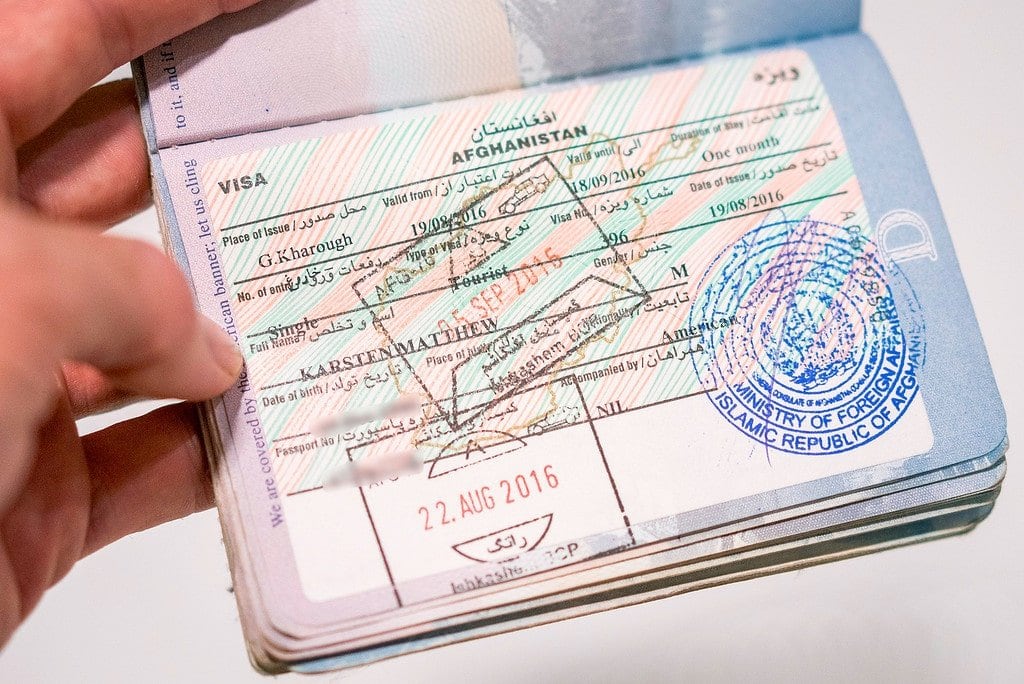
How To Get A Visa
There is a very specific process for obtaining a visa to enter Afghanistan's Wakhan corridor, and it involves a trip to the neighboring country of Tajikistan and a town called Khorog near the border.
But first, you'll need a double entry visa for Tajikistan. You cannot get a double entry visa on arrival at the airport, so you must apply for one in advance at an official embassy or consulate.
Why? After you travel into Afghanistan through Tajikistan, you'll need to leave through Tajikistan too. Which counts as a 2nd entry into Tajikistan. But typical visas for Tajikistan are only single entry.
With your double-entry Tajik visa, the next step is to travel to the town of Khorog, where it's possible to apply for an Afghanistan visa at the local consulate. Keep reading to learn more...
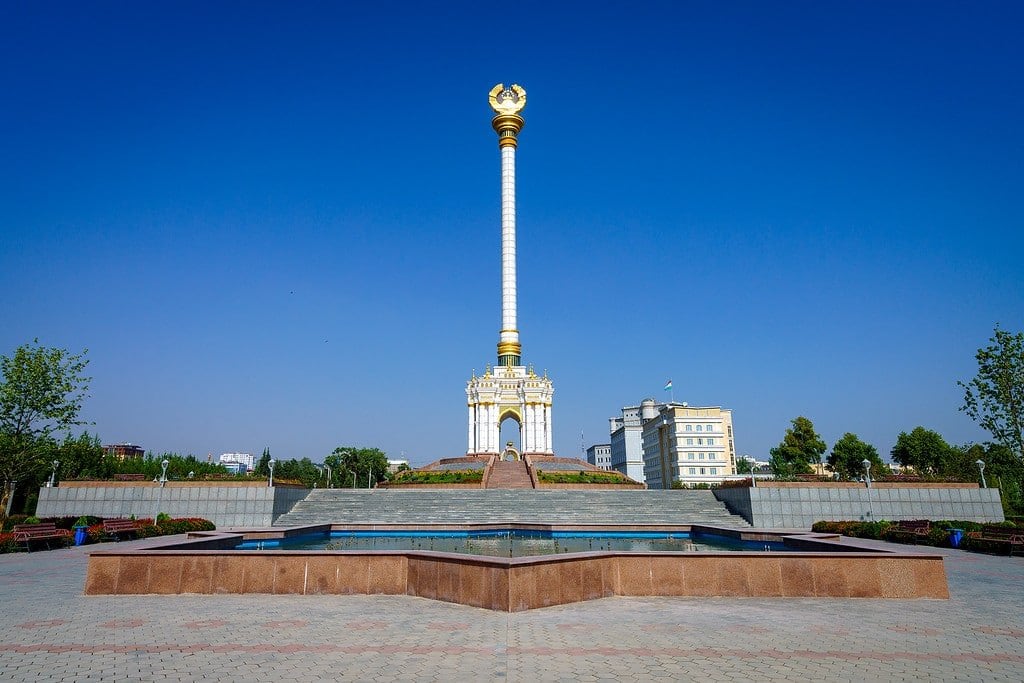
Arriving In Dushanbe
Flying into the city of Dushanbe, the capital of Tajikistan, is going to be your first adventure. Tajikistan has a reputation as one of the most corrupt countries in the world -- and you'll soon know why.
Dushanbe airport officials asked me for bribes on 2 separate occasions. If you refuse, they send you to the back of the line, or move you to another line, over and over again until you give up and pay them.
Dushanbe Accommodation:
Twins Hotel | Rohat Hotel | Green House Hostel
I recommend spending at least one night in Dushanbe, but probably more. You'll need to exchange cash, buy last-minute supplies, and get a local sim card for your phone.
The best cell phone company to use is TCell for cell service in the Pamir Mountains. You'll even have some service on the Afghanistan side for a while.
There's a basic outdoor shop in Dushanbe called "BAP3ИШ" where you can buy a knife, stove gas, and other camping supplies you might need in the Wakhan. Nothing high-end, just cheap Chinese made stuff.
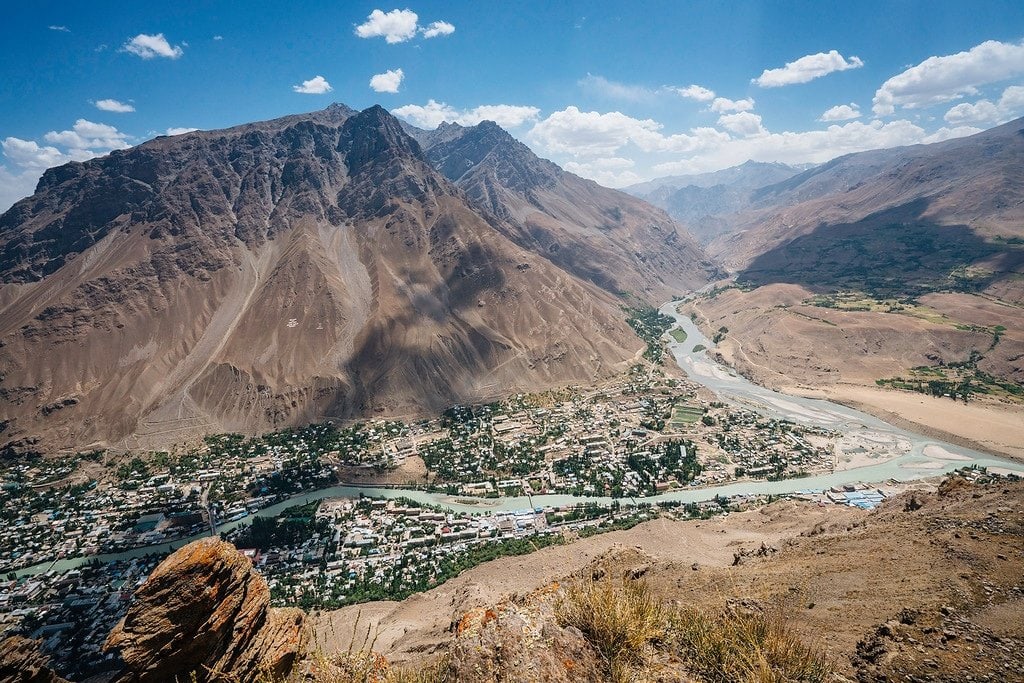
Traveling To Khorog
Khorog is a mountain town in the heart of Tajikistan's remote GBAO region. To travel in Tajikistan's GBAO region, you need a GBAO permit.
This can be obtained either when applying for your double-entry Tajikistan visa, or in the Tajik capital of Dushanbe at the OVIR office.
Now you must travel to Khorog and apply for the Afghan visa in person.
This requires a rough, dusty, 20 hours long 4x4 taxi journey over the Pamir Highway from Dushanbe.
While there's also a short flight from Dushanbe to Khorog, it's not easy to get a ticket and is often canceled due to weather.
Khorog Accommodation:
Mountain River Guest House | Delhi Darbar Hotel | Pamir Lodge
Khorog is a major stop for trekkers/cyclists/motorcyclists who are exploring the Pamir Highway in Tajikistan. It's also the last place you'll find an ATM, there are 2 or 3 in town. Plan on spending a least a night or two here before heading to Afghanistan.
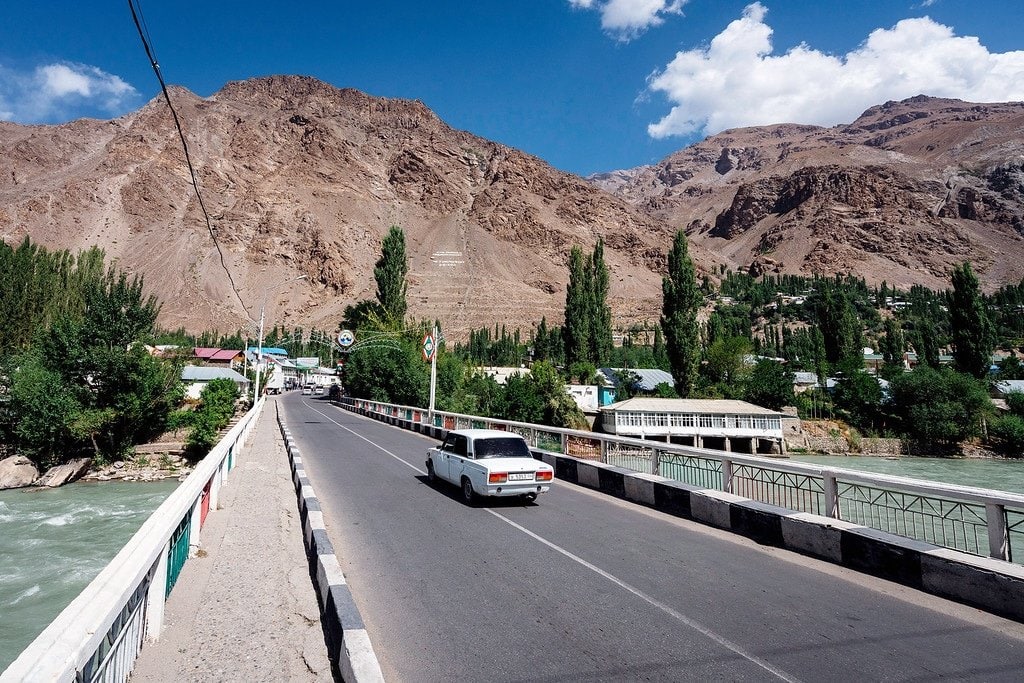
Visiting The Afghan Consulate
Khorog is home to a small Afghan consulate that has a reputation for giving out Afghan visas in as little as an hour. As an American, this same-day visa service cost me $200 USD.
Why so much? Because the United States makes it difficult for Afghans to get a visa. So they return the favor with a high visa fee for Americans.
The woman at the consulate was trying her best to persuade me not to visit. Saying the visa is too expensive for Americans, that it won't be easy to travel there, etc. I assured her I was prepared and had been planning this trip for years.
At the consulate, I had to explain why I wanted to visit Afghanistan (hiking in the Wakhan), and write/sign a letter acknowledging I alone was responsible for myself and my actions in Afghanistan.
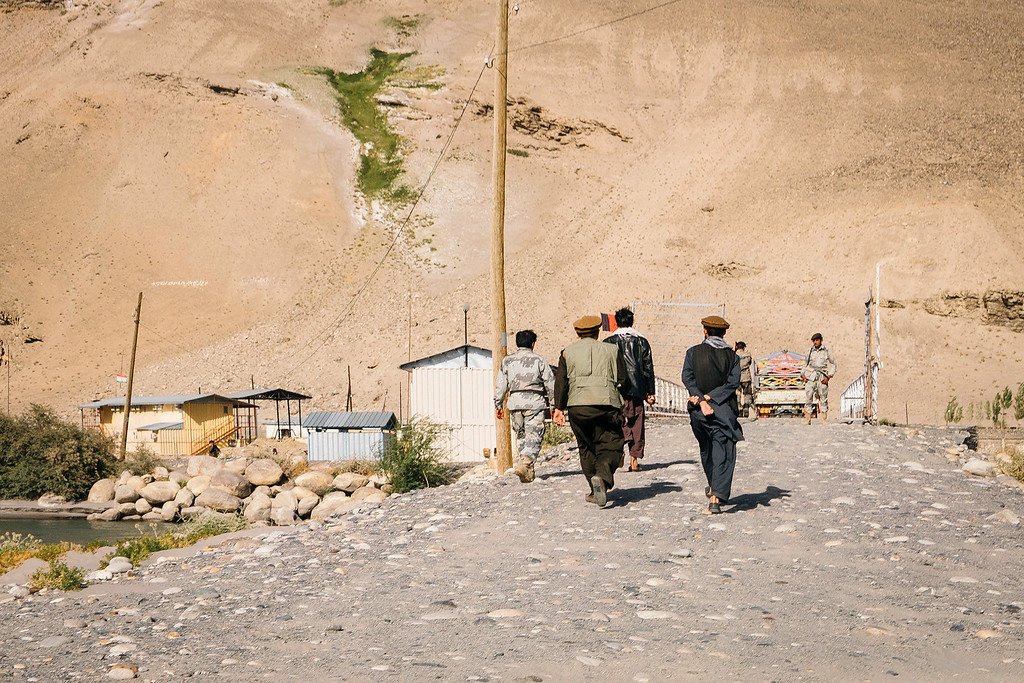
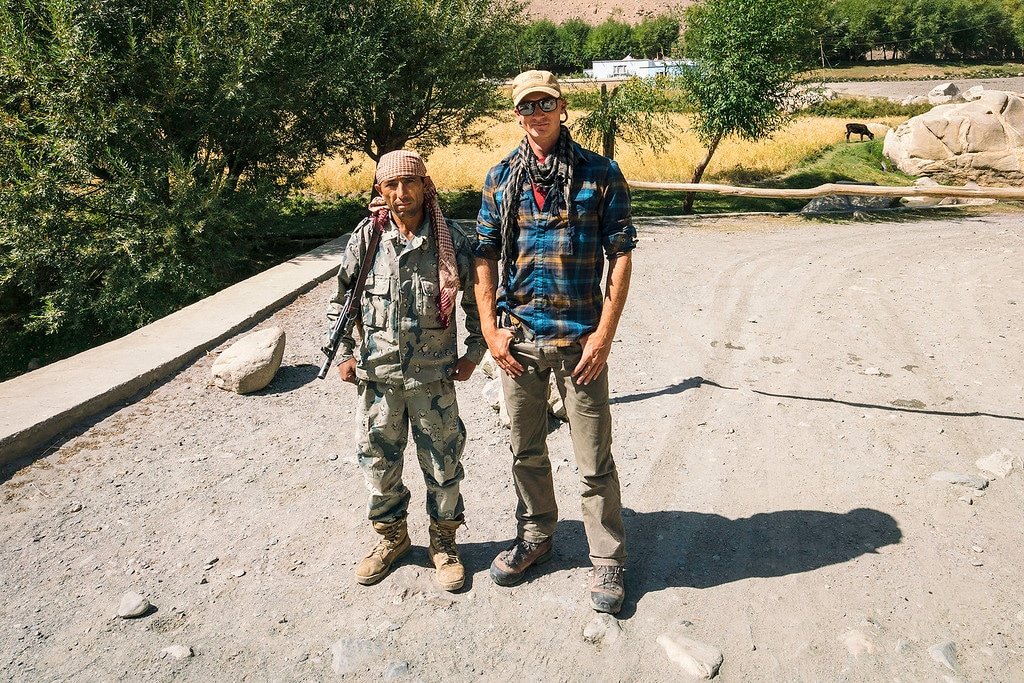
Crossing The Border
With my shiny new Afghan visa in hand, I traveled to the Tajik border town of Ishkashim. It's a 3 hour drive South of Khorog. One or two shared taxis head to Ishkashim from Khorog each morning.
The desolate Afghanistan border post sits on the right side of the road before you actually reach the town of Ishkashim. Tajikistan border guards have a reputation for requesting bribes, so just be aware.
On the Afghan side of the border, they searched my bags and scanned my passport through the INTERPOL database to ensure I wasn't a fugitive. After that, I was in! Welcome to Afghanistan.
I'd be lying if I said I wasn't feeling nervous standing on Afghan soil.
The border post is a few kilometers away from the nearest Afghan town of Sultan Eshkashim, so unless you want to walk there, an overpriced taxi ride costs $20 for a 10-minute drive.
[su_note note_color="#DCEFF5" text_color="#333333" radius="3" class=""]
Ishkashim vs. Sultan Eshkashim: These are two different towns, and it can be confusing. Ishkashim is the border town on the Tajikistan side, Sultan Eshkashim is the border town on the Afghanistan side.[/su_note]
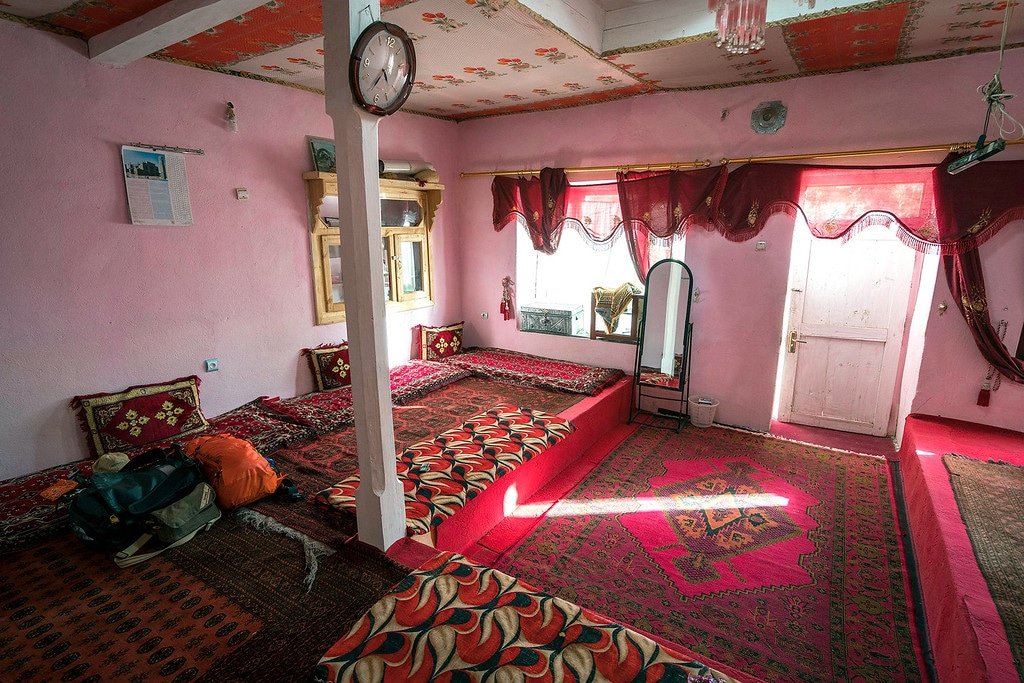
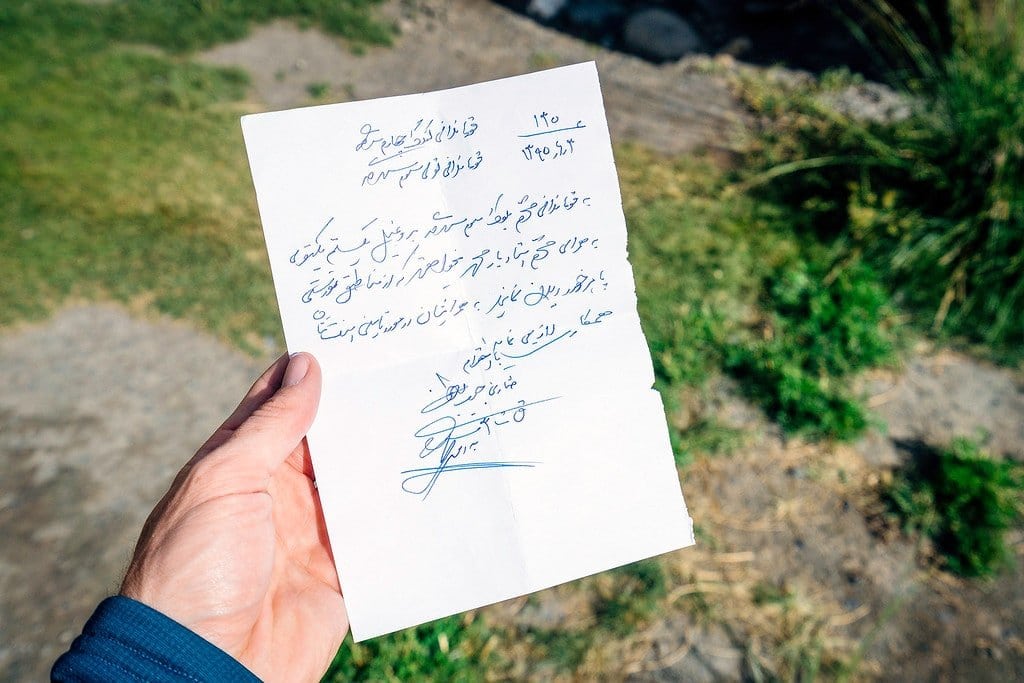
Eshkashim & Wakhan Permits
Sultan Eshkashim is the entrance to the Wakhan Corridor. Many travelers are happy to just hang out there for a few days to experience a taste of Afghanistan before heading back to Tajikistan.
But if you want to go hiking in the Wakhan, you need to acquire additional permits.
Sultan Eshkashim Accommodation:
Marco Polo Guest House (no website)
While getting these permits on your own is possible, it's a huge pain in the ass if you don't speak Persian/Farsi. Instead, I hired an English speaking local to help for about $50.
The permit process involves multiple passport photos, paperwork, plenty of tea, and stops at a few different government, police, and military offices. You'll have to explain yourself to local officials questioning why you are there, what you do, etc.
The whole ordeal takes 3-4 hours, provided all the offices are even open. They sometimes close down on certain days (Friday/Saturday). I got lucky, but if something is closed you may have to return the next day.
Local officials eventually gave me a hand-written letter granting permission to travel to the next village, where I'd have to request permission again to move on further.

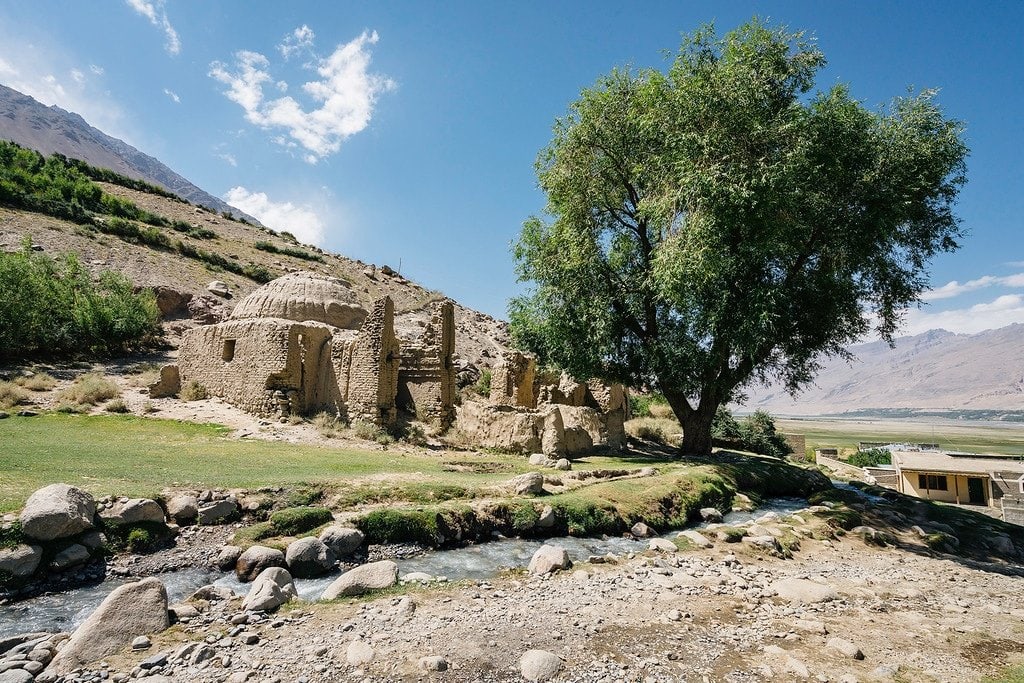
Driving To Sarhad-e Broghil
Now that I had my permits for the Wakhan, it was time to make my way 200 km up the valley in an expensive 4X4 taxi to the village of Sarhad-e Broghil, where the road ends and the true wilderness begins.
I hired a local translator/guide to join me on the trek.
For the next 2 days, Yar Mohammad Attahi helped me navigate additional checkpoints and permit stops as we drove into the mountains while giving me the opportunity to actually communicate with locals.
The 4X4 journey to Sarhad navigates some of the roughest roads I've ever seen. Over boulder fields, into rivers, along the edge of cliffs, and through deep desert sand.
Our beat-up Toyota van was equipped with crappy shocks, broken windows, and was repeatedly crippled by flat tires (5 times). It was one wild ride!
But because so few cars travel out here, and the route is unforgiving to vehicles, the price of this "taxi" journey is high -- $350 one way.
Once we made it to Sarhad-e Broghil, Yar and I spent the night at a guesthouse. The next day we began our 100 mile trek across the towering, snow-capped Pamir Mountains.
READ MORE: Epic Pictures From Afghanistan
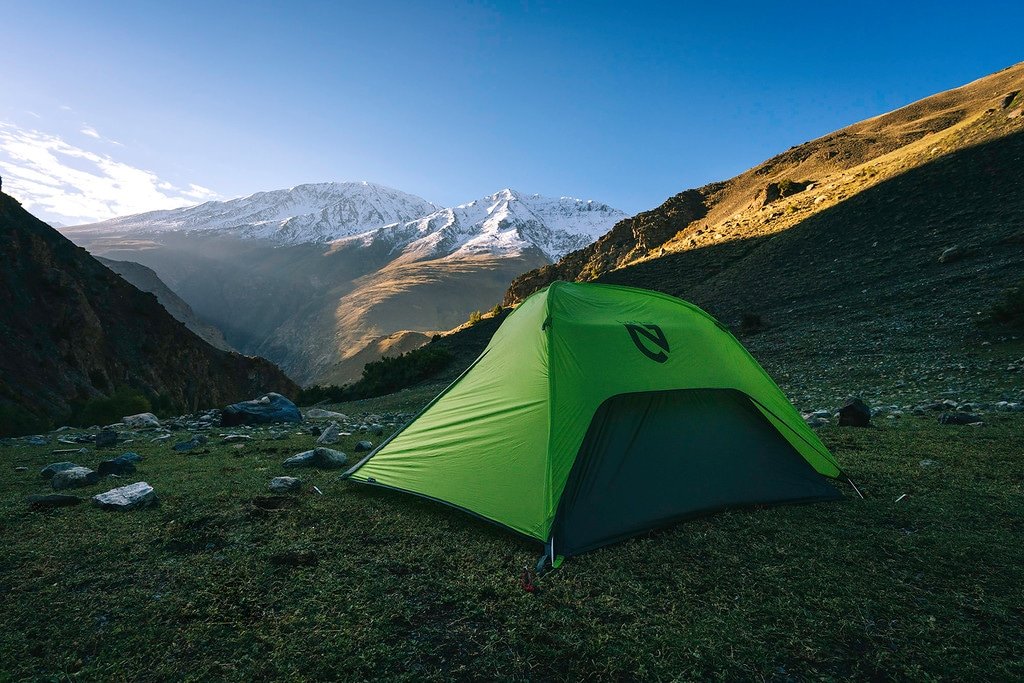
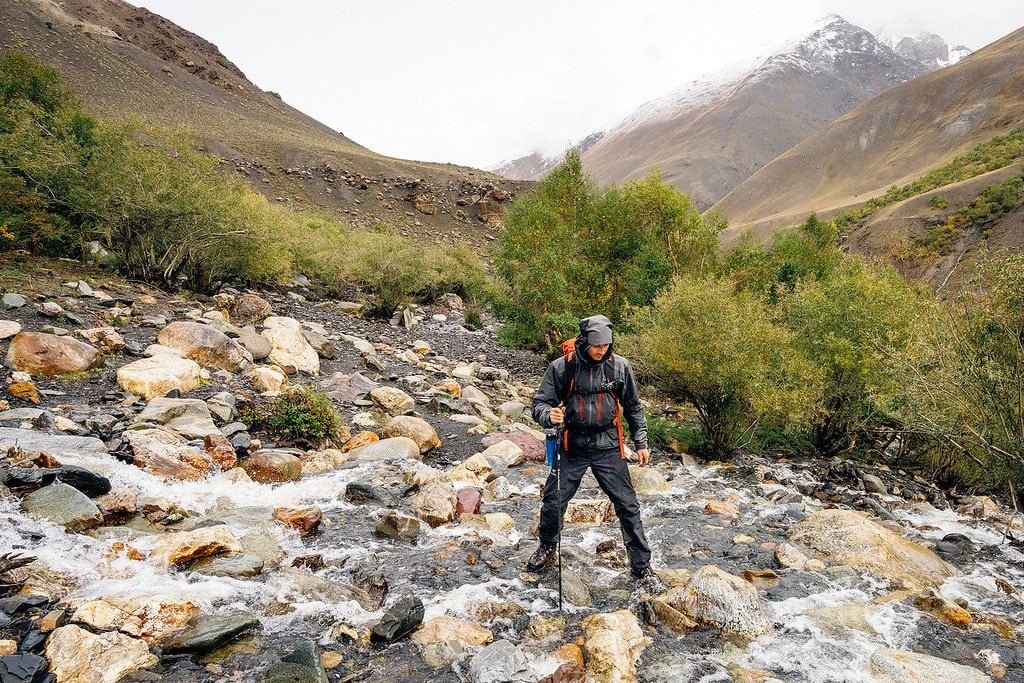
Hiking In The Wakhan
While I'll go into more detail about the trek itself in future articles, I just wanted to share some logistics here. I found my guide/translator Yar in the Afghan border town of Sultan Eshkashim.
At the end of the road in Sarhad, we hired a pack horse accompanied by its owner Panshambe to help carry our food & gear for the next 10 days of hiking.
The three of us were completely on our own in the wilderness after Sarhad. Only passing through tiny Wakhi or Kyrgyz communities made up of a few stone huts and yurts. No markets, no doctors, no roads.
I'd brought a camping stove and enough freeze-dried meals for 12 days, along with energy bars and trail mix for snacks. My companions packed rice, tea, and bread for themselves. Over the course of the trip we mixed and shared our supplies with each other.
Unless you bring your own trekking food, your options are going to be limited. Canned fish, beans, rice, and sugar are available to buy in Sultan Eshkashim. But that's about it. You can sometimes buy flatbread from locals in the mountains.
The 10 day trek maintained altitudes between 12,000 and 16,000 feet. The trails themselves weren't terribly difficult, as they are used by locals on a daily basis, but it's the altitude and the dramatic weather that can mess you up.
Some of the trails were perched on the edge of 300 foot drops, and when it snowed (yes, in August), these became much more dangerous. There were many river crossings, but nothing deeper than your knee.
We hiked a loop from Sarhad to Chaqmaqtin Lake, starting on the "high" route through the 16,000 ft. Garumdee Pass, returning on the "low" river route back to Sarhad. You can read more about these trekking routes here.
How Much Did It Cost?
I spent 2 weeks in Afghanistan, with 10 days of those trekking. It cost me about $1800 USD. That doesn't include 1 week spent in neighboring Tajikistan before and after the trip. Because just getting to the border of Afghanistan is a separate adventure that takes 2-3 days!
To keep things simple, prices are in US Dollars.
Tajikistan Costs
- Double Entry Tajikistan Visa: $55 USD
- GBAO Permit: $4-$20 USD
- Dushanbe Hotel: $10-$80 USD per night (x 2)
- 4X4 Taxi to Khorog: $38 USD (x 2)
- Khorog Hotel: $20-$50 USD per night (x 2)
- Taxi to Ishkashim: $9 USD (x 2)
Afghanistan Costs
- Afghanistan Visa: $200 USD (cheaper if you're not American)
- Taxi to Eshkashim: $20 (x 2)
- Guest House: $10-$25 USD per night (x 8)
- Wakhan Permits: $50 USD
- 4x4 Taxi: $350 USD one way (x 2)
- Pack Animal: $20 USD per day (x 10)
- Guide/Translator: $30 USD per day (x 14)
- Camping: Free
I'd say you want to budget at least $2500 USD and 3 weeks for a similar trip, not including flights. Stuff goes wrong, delays happen, prices change, and credit/ATM cards are useless once you're in Afghanistan.
It's a tough place to travel in that respect. You need to plan at least a few buffer days, and bring plenty of extra cash for unexpected situations.
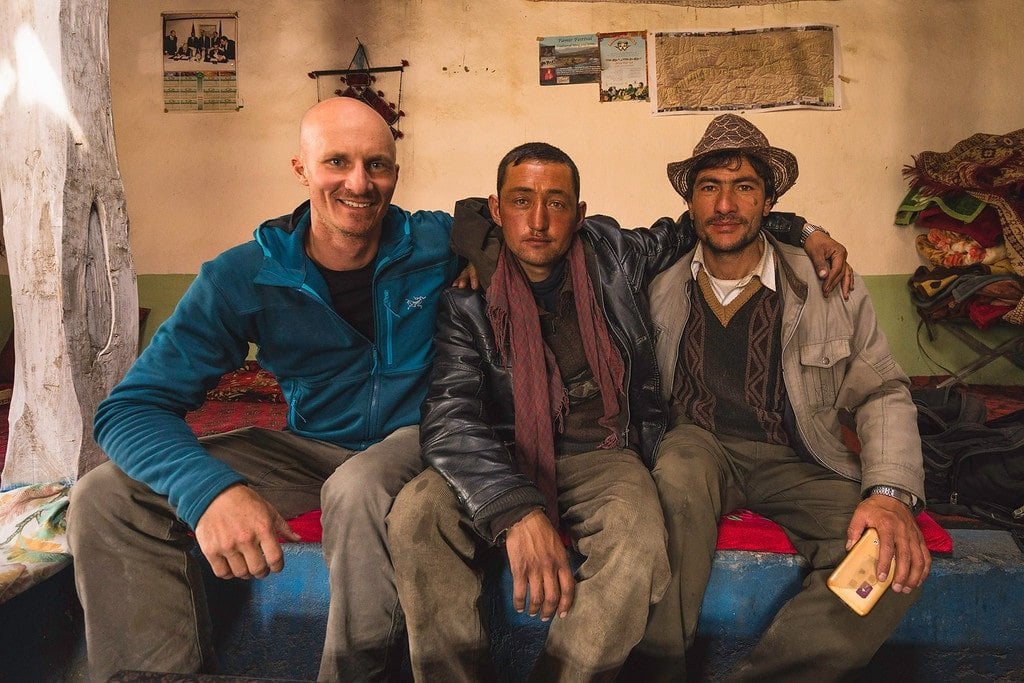
Warnings About Travel In Afghanistan
Afghanistan is still a very volatile country. While the Wakhan Corridor itself is pretty safe, a foreigner did disappear there recently, and other parts of the province have seen kidnappings and Taliban attacks.
Just because it felt safe when I was there doesn't mean it always will be.
Also, it's important for me to point out that the Afghanistan/Tajikistan border sometimes closes without warning. Usually because of Cholera outbreaks, sometimes just because of bureaucratic arguments.
If it closes when you're on the Afghan side, you'll be stuck there until it opens again. Which could be a few days, or a few weeks. You need to be prepared for that possibility.
Traveling overland from Kabul to the Wakhan is not a safe option at the moment, as there are Taliban controlled areas located between the two. Entering & exiting from Tajikistan is the safest option.
Helpfull Websites About The Wakhan
Other Areas Of Afghanistan
- Driving In Afghanistan Nomad Revelations
- Ultimate Afghanistan Travel Guide Lost With Purpose
- Afghanistan Travel Guide Uncharted Backpacker
Wakhan Corridor Guide
If you're planning a trip to the Wakhan, you can reach out to Yar Mohammad Attahi as a guide and translator. Tell him I sent you!
More From Afghanistan
This was just a brief overview of the logistics for traveling in Afghanistan's Wakhan Corridor. I'll be sharing much more about the incredible trek itself in future articles.
If you'd like a notification when I publish something new about Afghanistan, make sure to sign up for my newsletter here. ★
Travel Video: Backpacking Afghanistan
Subscribe to my YouTube Channel for new Adventure Travel Videos!
(Click to watch Backpacking Afghanistan – Wakhan Corridor on YouTube)
Enjoy This Article? Pin It!
READ MORE TRAVEL TIPS
I hope you enjoyed my guide on Afghanistan’s Wakhan Corridor! Hopefully you found it useful. Here are a few more wanderlust-inducing articles that I recommend you read next:
- My Photo Essay From Afghanistan
- Travel Backpack Review Guide
- Useful Travel Tips After 9 Years Backpacking
- Top Travel Scams You Should Avoid
Have any questions about Afghanistan? Would you ever consider traveling there? Join the conversation on Facebook, Instagram, or Twitter to share!


